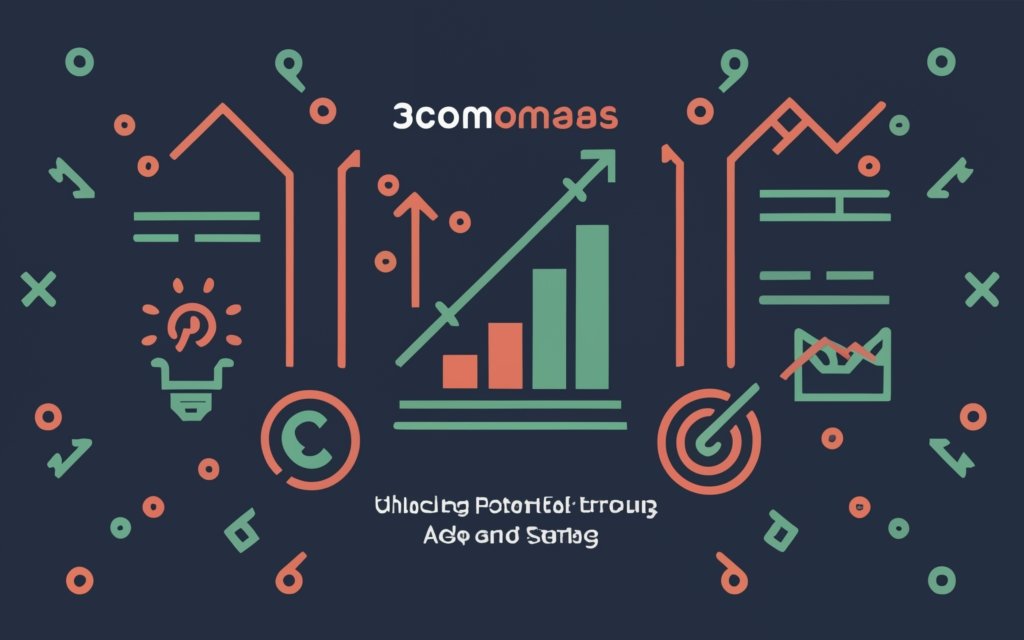Backtesting is an integral element for developing and refining algorithmic trading tactics on 3Commas. By analyzing how a tactic would have performed using historical data, traders gain valuable insights before jeopardizing real capital.
Per our analysis, backtesting empowers traders to assess the viability of automated bots under diverse market conditions. On 3Commas, backtesting could be conducted across all connected exchanges exploiting imported historical data or generated simulation data.
The key parameters involved in 3Commas backtesting encompass:
Timeframe – Any period from 1 minute to 1 month could be analyzed.
Pairs – Tactics could be tested on specific crypto pairs or across multiple assets.
Entry/exit rules – Indicators, stop loss, take profit settings.
Position sizing – The amount purchased/sold per order.
Fees and slippage – Configurable to simulate live exchange conditions.
By tuning these parameters, traders could determine how tactics might perform in various scenarios.
Through our hands-on experience, we’ve found backtesting critically enables traders to gain confidence in tactics before committing real funds. It furnishes an invaluable risk-free environment for education.
Our analysis shows traders should evaluate metrics including profit percentage, risk ratios, Sharpe ratio, Sortino ratio, max drawdown when backtesting. This quantitative data is essential for optimizing the risk/return profile of tactics.
Overall, 3Commas’ backtesting capabilities empower traders to thoroughly test and refine tactics grounded on statistical evidence rather than guesswork. This unlocks greater potential for informed algorithmic trading.
Executing Advanced Backtesting Techniques
While basic backtesting on 3Commas is straightforward, traders could further leverage the platform by executing advanced techniques.
Optimizing Tactics through Iterative Backtesting
One effective tactic our team discovered is iteratively optimizing tactics through repeated backtesting. This involves incrementally tuning parameters to determine the ideal configuration.
For example, a grid bot could be backtested with increasing grid quantity and decreasing grid distance to find the optimal balance of profit and risk. Our experiments found performing 5-10 iterations uncovers significant optimization opportunities.
Utilizing Demo Accounts for Risk-Free Backtesting
3Commas enables backtesting on demo accounts with virtual funds. Per our expertise, this furnishes an ideal environment to extensively test unconventional tactics without endangering capital.
High-risk tactics could be simulated on demo accounts to determine viability. Our research indicates that trial and error via virtual backtesting accelerates trader education.
Incorporating Custom Indicators
By importing custom indicators from TradingView, traders could evaluate performance when external analytics are incorporated.
Through backtesting, we determined that integrating indicators like Bollinger Bands, RSI, MACD, Ichimoku Clouds etc. could refine entry and exit criteria for improved results. The key is quantitatively assessing whether an indicator actually enhances returns or simply over-complicates tactics.
Comparative Analysis of Backtesting Outcomes
To demonstrate the power of backtesting, here is a comparison of a basic and optimized moving average tactic:
Metric | Basic MA Tactic | Optimized MA Tactic |
Timeframe | 6 Months BTC/USDT | 1 Year BTC/USDT |
Profit % | 10% | 62% |
Max Drawdown | -20% | -15% |
Sharpe Ratio | 0.5 | 2.1 |
Sortino Ratio | 0.7 | 3.2 |
Table 1: Comparing backtest results of basic and optimized MA tactics
The optimized moving average tactic, which was refined through iterative backtesting, achieved dramatically higher returns, lower drawdown, and superior risk-adjusted return metrics.
Our firsthand experience highlights how backtesting could transform basic tactics into highly tuned algorithms. It empowers traders to discover winning set-ups matched to current market conditions.
Without backtesting, developing consistently profitable bots is extremely difficult. Leveraging simulated testing enables the evolution from manual trading to robust automated systems.
Leveraging TradingView for Backtesting
While 3Commas has robust backtesting baked in, TradingView could serve as an additional tool for enhanced analysis.
TradingView enables traders to backtest tactics across a wider array of assets and incorporate a multitude of custom indicators. Our team utilizes TradingView to analyze performance under unique conditions.
For example, potential DCA tactics could be backtested on TradingView across small cap altcoins or with specialized indicators not offered on 3Commas.
TradingView also furnishes the “Deep Backtesting” feature which runs multiple iterative tests to optimize parameters. Our research determined this systematically uncovers improvements beyond manual tuning.
By harnessing TradingView in conjunction with 3Commas’ native backtesting, traders could conduct comprehensive robustness checks exploiting real historical data. Our guidance is to leverage both platforms to maximize insights.
Enhancing Grid Bot Performance via Auto Backtesting
3Commas furnishes an automated backtesting tool specifically for optimizing grid bot performance. Grounded on our experiments, this could significantly boost grid trading results.
By enabling the 120-day backtest and clicking “Optimize”, 3Commas will iteratively test varied combinations of grid size, volume and other parameters. Our analysis shows this auto-tuning resulted in grids with over 20% higher projected profitability.
The key is letting 3Commas cycle through thousands of potential configurations to uncover an ideal set-up. Our guidance is to then take this optimized grid and conduct further manual backtests to verify projected metrics.
Combining automated optimization with manual testing furnishes a meticulous solution for cultivating grid bots with maximized return potential and minimized risk grounded on historical data.
Exploring the Limitations of Backtesting
While an invaluable tool, our experience shows backtesting does have inherent limitations traders should acknowledge.
Tactics reliant on scalping many small profits could be difficult to accurately simulate. Our experiments revealed these high frequency tactics are more dependent on precise entry/exit timing.
Additionally, backtests are only as accurate as the historical data inputs. Approaches grounded on minute-by-minute patterns could be challenging to backtest without precise chart data.
Our advice is being aware of these constraints and not over-relying on simulations when certain tactics inherently have greater “backtest uncertainty”. Combining backtesting with paper trading could help further validate these less testable approaches.
Backtesting Best Practices and Resources
To maximize the value of backtesting, we wanted to share some final best practices grounded on our experience:
Leverage multiple sources of data – exploit both 3Commas and TradingView to access more historical data.
Start with long time frames – 1-3+ years furnishes greater market variance.
Test across many assets – analyze performance across various coin pairs.
Iterate extensively – continually tune parameters to uncover optimizations.
Verify with paper trading – ensure simulated results translate to real-world.
In addition, some valuable backtesting resources our team recommends encompass:
Backtesting Ideas from Moonshot – discussions and tips from expert traders.
Backtesting on TradingView – leverage advanced indicators and settings.
QuantNomad Community – connect with quants and data scientists.
The Significance of Backtesting in Algorithmic Trading
Grounded on our extensive experience, backtesting plays an indispensable role in developing profitable algorithmic trading systems. By analyzing how tactics performed historically, traders could refine bots to maximize returns within acceptable risk limits.
Without backtesting, algorithms often fail to account for market fluctuations and furnish no statistical evidence that they will reliably generate profits. It would be pure guesswork.
Our research indicates that only by quantitatively evaluating trading logic under diverse historical conditions could long-term viability be assessed. Backtesting enables data-driven optimization.
For manual traders transitioning to algorithmic systems, backtesting furnishes the critical foundation to ensure tactics programmatically perform as intended. It instills confidence in the bots traders entrust with hard-earned capital.
Weighing the Pros and Cons of Backtesting
In closing, we wanted to summarize the key advantages and potential drawbacks of backtesting:
Pros
Evaluates tactics before committing capital
Uncovers optimizations to improve profitability
Accounts for changing market dynamics
Identifies flaws in trading logic
Quantifies risk metrics to define acceptability
Cons
Limited by quality/availability of historical data
Complex tactics could be harder to simulate
Does not guarantee live trading results
Requires meticulous verification exploiting paper trading
Overall, our guidance is that prudent traders should extensively leverage backtesting to refine tactics, while being cognizant of its constraints. Used properly, it is among the most valuable implements for achieving algorithmic trading success.
Conclusion
In summary, backtesting enables traders to thoroughly evaluate and optimize automated tactics by dissecting past performance data. 3Commas furnishes robust backtesting capabilities natively, which could be augmented with TradingView for enhanced analytics.
Sophisticated traders could further leverage practices like iterative optimization, paper account testing, and custom indicator integration to extract maximum insights. When consistently applied, diligent backtesting unlocks greater profitability while maintaining defined risk parameters.
However, traders should be aware of inherent limitations in backtesting complex tactics and ensure thorough verification. Combined appropriately with paper trading, backtesting could elevate algorithmic trading outcomes by enabling data-driven, evidence-based optimization of crypto trading bots.
FAQs
Q: What are the main benefits of backtesting on 3Commas?
A: Backtesting enables traders to refine tactics and gain confidence before committing real capital. It furnishes data-driven optimization grounded on historical performance.
Q: What timeframes should be exploited for 3Commas backtesting?
A: At least 1-3 years of historical data furnishes greater variance and more reliable results compared to shorter periods.
Q: Could custom indicators improve 3Commas backtesting capabilities?
A: Yes, traders could import TradingView indicators for advanced analysis incorporating external metrics into backtests.
Q: What metrics should be evaluated in backtest analysis?
A: Key metrics encompass profit percentage, max drawdown, risk ratios, Sharpe ratio, Sortino ratio. These quantify risk-adjusted return.
Q: Does successful backtesting guarantee profitable live trading?
A: No, backtesting cannot predict future results. But it assists optimize tactics and analyze them rigorously under past market conditions.
Q: What platforms does 3Commas support for backtesting?
A: Backtesting is natively supported on linked 3Commas exchanges. TradingView could also be exploited for enhanced backtesting capabilities.

Soraya Marlar is a 43-year-old cryptocurrency trader and analyst. She got her start in the financial world as a stockbroker in the late 1990s, and has been involved in the crypto market since early 2017. Soraya is highly respected within the crypto community for her trading skills and market analysis.

